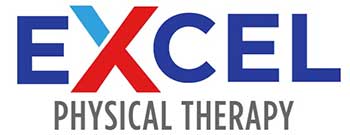Pelvic floor physical therapy is a specialty that involves the assessment and treatment of complications that are usually related to the pelvis. Examples include pain related to the low back, SIJ, and hip areas. Common conditions treated are urinary dysfunction such as incontinence, bowel leakage or constipation, and sexual dysfunction such as pain with intercourse. A comprehensive assessment of the full body is performed to get to the root of the problem. This includes both external and internal examinations (vaginal or rectal if needed) to determine the state of the pelvic floor muscles and how they are interacting with the rest of the bodies central stability system. The pelvic floor muscles form the bottom of the pelvis and attach at the tailbone and pubic bone. They play a role in stabilizing the pelvis and spine, and contribute to urinary, bowel and sexual function. Physical therapy does not only address the pelvic floor muscles, but more importantly the factors that could be contributing to the problem, including altered breathing mechanics and movement dysfunction. Treatment consists of comprehensive education, manual therapy, and specific exercises to help improve the quality of life in each patient. Research demonstrates that pelvic floor physical therapy has been highly effective in the conservative management of urinary incontinence, pelvic organ prolapse, and several other conditions.
Conditions treated:
- Pelvic Pain:
- Painful intercourse
- Painful scars/abdominal adhesions
- Vulvar/vaginal discomfort
- Bladder & Bowel Dysfunction:
- Urinary & fecal leakage
- Frequency & urgency
- Pelvic organ prolapse
- Pregnancy & Post-Partum
- Back and pelvic pain
- Recovery of pregnancy
- Painful scar & scar tissue
Internal and external examination provides a strong anatomical basis for treatment. Treatment typically includes restoring function by improving muscular support around the pelvis, improving behavioral and dietary habits, and retraining body movements to allow for optimal organ and structural function.
Treatment may include:
- External and internal soft tissue mobilization
- Myofascial release
- Visceral manipulation
- Trigger point release
- Biofeedback
- Deep tissue massage
- Connective tissue manipulation
- Electrical stimulation
- Dry needling
- Heat and cold therapy
If you have questions please call and you may speak directly with our pelvic health physical therapist to discuss in more detail how physical therapy may be able to help you overcome your pelvic pain or dysfunction.
